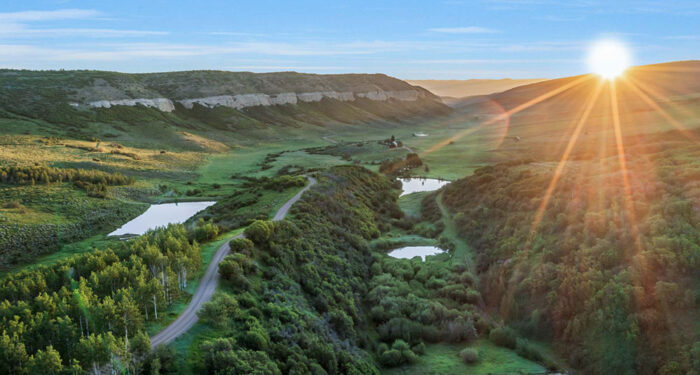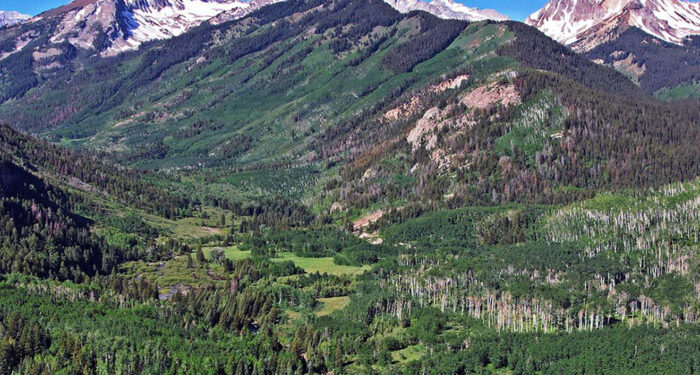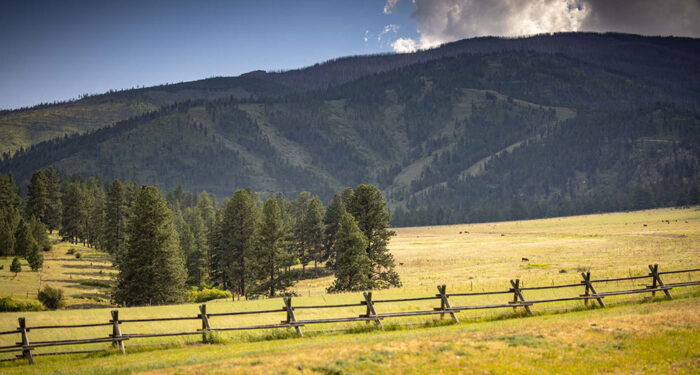When owning timber-producing land, one of the most important considerations you can make is how to maximize the income that it generates. There are a wide variety of factors that can influence the health, value, and sustainability of your forest. Here we will be outlining some key points to keep in mind when seeking to maximize the total value of the timber income on your property.
Tree Value and Timber Worth
A great place to start on maximizing our returns on our timber is to understand how to determine timber value. In a forest, a “stand” is a uniform grouping of trees planted in order to differentiate one harvest type from another. In each stand, individual tree species, height, stem quality, and diameter determine market value.
Using a measurement of tree diameter at four-and-a-half feet off the ground, an expression of diameter at breast height (DBH), is used to easily chart the value of trees. This is because as a tree grows, its greater diameter yields a larger number of board feet (the base lumber increment of feet of board yielded). A larger DBH also increases value by allowing different forest products to be created. Typically, hardwood tree products grow from uses in pulpwood, to sawtimber, and finally veneer, with each selling at a higher price and becoming increasingly more valuable than the last. As a result, DBH provides us an example of how returns on your timber can escalate over time and impact your decision as to when to harvest.
Estimating timber value can be further complex depending on the health of a given stand, proper thinning procedures, and overall consistency. Regular thinning can be a crucial part of maintaining your forest as you remove damage and overgrowth in order for your remaining trees to grow more efficiently. For the purposes of this article, we will focus on harvest cycles and growth patterns based on DBH. Ultimately, consulting with a professional forester is important to establish growth patterns depending on your region and type of tree. Below is a graph demonstrating the general expected value increase based on DBH growth.
Maximizing the Financial Return on Your Timber
When looking to optimize for financial return from your current forest, ignoring all else, it is important to treat your timber as an asset. When considering the value of an asset that has future expected returns, some calculations can be done in order to compare your potential earnings to other available current investments (stocks, bonds, etc.). This is a common form of financial comparison known as “discounting” that allows you to create a rate of return to compare any appreciating asset with unrealized gains. If the rate of return you’re receiving from the future gains on your timber is ever lower than another established current investment, then you know it is time to harvest. This takes a decent amount of estimation on future timber markets, timber price, and timber sales, as the market ultimately determines the value of your product. However, when using historical data conservatively, estimating future market conditions can be possible.
Say you have discounted your entire forest and have found that over the next 10 years you will be essentially receiving a six percent return. If you know that the stock market returns about seven percent over the same period, harvesting now would be the better decision from a financial standpoint.
Maximizing the Sustainability of Your Forest
Beyond maximizing income in the short term, long-term sustainability can be crucial to the overall value of your income-producing forest. There is a common misconception that simply delaying your harvest can be the best way to keep it healthy and sustainable. In fact, harvesting is a critical portion of forest management. Not only can it maximize your income, but it can promote a healthier forest that produces higher quality timber, and even supports a healthy wildlife ecosystem.
When consulting with a forester, you can properly gage the lifecycle of your forests given stands, and as a result, know when your maximum age for harvesting is. This can be significant for long-term harvest cycles intending to produce veneer products as, beyond this max age, DBH growth can radically decline. Overall forest health can also decline as trees begin to reach the end of their biological life cycle.
In a broad sense, the key to maximizing sustainability is to have a complete understanding of your forest. Knowing exactly when your stands may reach appropriate maturity for your lumber product goals, you may harvest various portions of your forest to allow thinning and prevent overgrowth. Avoiding careless harvesting, you can maintain your forest’s health and ensure its viability for generations to come.
Other Factors to Consider
Beyond direct financial returns and sustainability of your forest, additional factors should be taken into consideration to maximize your timber income. Careful analysis of factors such as tax implications, local market conditions, and operational costs will be necessary to make certain that you are well informed throughout your decision-making process. Capital gains can impact your profit, local market conditions can fluctuate, and operational costs can typically be minimized through smart planning.





